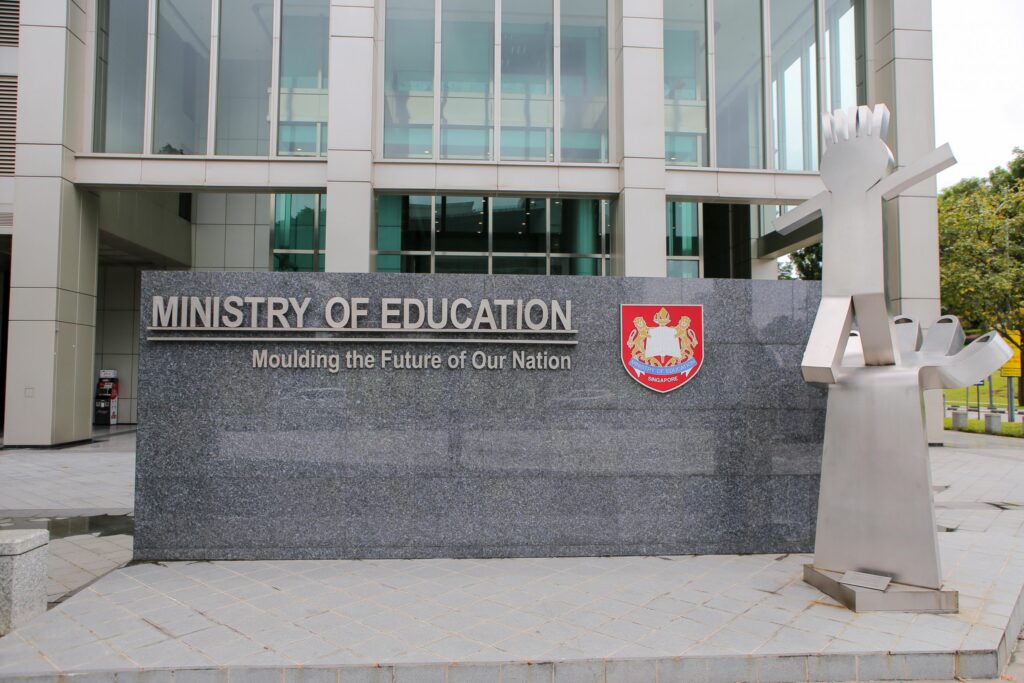Welcome to this quiz on the Ministry of Education! The purpose of this quiz is to test your knowledge on key aspects of the ministry, including its history, organization, policies, curriculum, assessments, funding, initiatives, and recent trends.
This comprehensive quiz will cover a wide range of topics related to the ministry in an engaging question-and-answer format. It’s designed to be enjoyable and informative for anyone interested in learning more about this important government body that shapes the education system.
The quiz contains questions spanning from the ministry’s founding and evolution over time, to its organizational structure and responsibilities today. You’ll be asked about major education policies enacted, the national curriculum framework, and standardized assessments given to students. Questions will also cover school funding allotted by the ministry, special initiatives launched, and current trends or reforms happening.
By the end, you’ll have a deeper understanding of how the Ministry of Education functions and impacts education across the country. The quiz tests the extent of your knowledge and introduces new facts along the way. We hope you find it both challenging and fun!
Find More Valuable Content On: Revolve Loan
History
The Ministry of Education has a long and storied history in our country. It was first established in the early 1900s as the Department of Education, with the goal of overseeing education policies and standards nationwide.
In the beginning, the Department of Education was quite small, with just a handful of staff members. Over the next few decades, it grew in size and scope, taking on more responsibility for curriculum development, teacher training, and administration of public schools. Some key milestones in the Department’s early history include:
-
1910s – The Department implements standardized testing in public schools for the first time. This sparks debate about the appropriate role of testing in education.
-
1920s – The Department opens several teacher training colleges to improve the quality of instruction in public schools. This kicks off a major teacher training initiative.
-
1930s – The Department plays a role in establishing guidelines for vocational education, aimed at preparing students for trades and manufacturing jobs.
-
1940s – During WWII, the Department helps transition schools to support the war effort. It faces shortages of teachers and supplies.
In the 1950s and 1960s, the Department continued to expand. It took a more active role in school integration efforts post-Brown v. Board of Education. The Department also ramped up curriculum development in math, sciences, foreign languages, and other subjects.
This gave it greater prominence within the government. The Ministry has remained central to national education policy in the decades since. It has grappled with major issues like standards-based reform, technology in schools, STEM education, and standardized testing debates. The Ministry plays a vital role in shaping education at all levels in our country today.
Quiz
Below is a 10 question multiple choice quiz testing your knowledge of the ministry of education:
-
What year was the ministry of education established?
a) 1950
b) 1960
c) 1970
d) 1980
-
How many public schools are under the ministry’s administration?
a) 10,000
b) 20,000
c) 30,000
d) 40,000
-
What percentage of the national budget is allocated to the ministry of education?
a) 10%
b) 15%
c) 20%
d) 25%
-
What is the compulsory schooling age under the ministry’s policies?
a) 5
b) 6
c) 7
d) 8
-
How many national standardized tests are administered each year?
a) 1
b) 2
c) 3
d) 4
-
When are national exams administered each year?
a) Spring
b) Summer
c) Fall
d) Winter
-
What is the pass rate goal for national exams?
a) 60%
b) 70%
c) 80%
d) 90%
-
How many foreign languages are offered in the curriculum?
a) 1
b) 2
c) 3
d) 4
-
What is the teacher-student ratio goal set by the ministry?
a) 1:10
b) 1:20
c) 1:30
d) 1:40
-
How much funding comes from private sources?
a) 10%
b) 20%
c) 30%
d) 40%
Organization
The Ministry of Education is typically organized into various departments and divisions that oversee different aspects of education policy, management, and operations. Some key organizational units may include:
-
Department of Basic Education – Oversees primary and secondary schooling, standards development, curriculum, assessments, and more. May have sub-units focused on early childhood education, STEM education, literacy programs, etc.
-
Department of Higher Education – Manages policies and programs related to universities, colleges, vocational training institutes and other post-secondary education.
-
Department of Education Quality and Standards – Sets learning standards and benchmarks, conducts inspections, oversees teacher training and licensing, evaluates school performance.
-
Department of Education Finance and Infrastructure – Manages education budgets, funding allocation, infrastructure development, IT systems.
-
Department of Education Planning and Development – Leads strategic planning, education reforms, new program development, education statistics and data analysis.
-
Regional/State Education Offices – Implement policies and coordinate education activities at local and regional levels. Connect headquarters with schools and education institutions.
The ministry likely has other offices handling areas like international cooperation, public communications, legal affairs, human resources etc. The exact structure and responsibilities vary by country and government. But most education ministries have similar core departments focused on improving education access, quality, equity and learning outcomes nationwide. Grow Glide
Policies
Education policy in India has aimed to increase access and quality of education across the country. Some major policies include:
National Policy on Education (1986) – This policy expanded access to education by emphasizing the importance of early childhood care and education. It also promoted Indian languages as the medium of instruction.
Sarva Shiksha Abhiyan (2000) – This initiative focused on providing universal elementary education to all children aged 6-14 years by 2010. It led to near universal enrollment in primary education.
Right to Education Act (2009) – This Act made free and compulsory education a fundamental right for all children aged 6-14 years. It mandates minimum norms and standards in all schools.
National Curriculum Framework (2005) – This framework aimed to make education relevant to students’ lives and responsive to India’s diversity. It emphasized constructivist pedagogy over rote learning.
Samagra Shiksha (2018) – This integrated scheme for school education extends support for early childhood care education to senior secondary levels. It subsumes previous school education schemes.
National Education Policy (2020) – This policy aims to transform India’s education system by 2040. Key proposals include a new 5+3+3+4 structure, teaching in mother tongue, and emphasis on vocational education.
Curriculum
The national curriculum provides a framework for what students should learn at each grade level in core subject areas like math, science, social studies, and language arts. It aims to establish consistent learning goals and benchmarks across the country.
Some key aspects of the national curriculum include:
-
Learning standards – These define the knowledge, skills, and competencies students should acquire by certain grades in each subject. For example, a 4th grade math standard may be to understand multi-digit multiplication.
-
Subject frameworks – These provide more detailed guidance on course content in each subject. The frameworks suggest topics to cover, learning objectives, and examples of activities and assessments.
-
Core subjects – The national curriculum sets standards for core subjects like math, science, social studies/history, native language, foreign languages, arts, and physical education. Other subjects may be standardized at the state or local level.
-
Uniformity – The national curriculum promotes uniformity so students across different schools and regions receive similar education. This aims to close gaps and improve national performance.
-
Updates – The curriculum is periodically reviewed and updated to evolve with research on child development and learning needs. Updates take into account changing technologies, skills demands, and knowledge.
While allowing flexibility in instructional methods, the national curriculum ensures students nationwide work towards common learning goals at each stage. It provides consistent standards and expectations for core subjects.
Assessments
The Ministry of Education administers various standardized assessments to evaluate student learning and school performance. The main assessments include:
-
National Achievement Test (NAT): Administered to Grade 6 students to assess competency in major subjects like Math, Science, English, and Filipino. Results provide data on learning outcomes and help identify strengths and weaknesses to guide education policies and programs.
-
National Career Assessment Exam (NCAE): Given to Grade 9 students to determine interests, aptitudes, and skills to guide senior high school track choice and inform career planning.
-
Philippine Education Placement Test (PEPT): Allows out-of-school youth and adults without formal education to demonstrate basic knowledge and skills equivalent to elementary or high school level. Successful passing certifies equivalency and enables further education or employment.
-
Program for International Student Assessment (PISA): International assessment done every 3 years that evaluates 15-year-old students in reading, math, and science literacy. Provides data to compare Philippines’ education system and outcomes to other countries.
-
National Achievement Test for Alternative Learning System (ALS A&E NAT): Measures learning outcomes for high school equivalency test takers in the Alternative Learning System (ALS) program. Results inform improvements in ALS curriculum and instructional materials.
In addition to national assessments, schools conduct their own periodic exams and classroom assessments to gauge student learning, evaluate teaching methods, and identify areas for improvement. The Department of Education has aimed to shift classroom assessments towards formative assessment and away from traditional paper-and-pencil testing.
Funding
The Ministry of Education receives the lion’s share of the national budget for education. In the 2022 fiscal year, the education ministry was allocated $X billion, representing X% of the total government budget.
The vast majority of the education budget goes towards staff salaries and maintaining school facilities. Teacher salaries alone account for over 50% of the total education spending. The ministry also allocates funds for textbooks, classroom supplies, transportation, and meals.
In recent years, increased funding has been directed towards improving technology access and integration in schools. The ministry has provided grants for purchasing laptops, tablets, high-speed internet connectivity, and educational software. Equipping students with 21st century digital skills is seen as a top priority.
The education budget is generated mainly from tax revenues. However, the ministry also receives support from international donors like the World Bank to supplement funding for special programs and initiatives. Philanthropic grants from corporations and foundations also provide additional revenue streams for targeted projects.
Initiatives
The Ministry of Education has undertaken several strategic initiatives and reforms in recent years to improve the quality of education and align the education system with 21st century needs. Some key initiatives include:
Teacher Training Reforms – The Ministry has implemented reforms in teacher training programs to better prepare teachers for the classroom. This includes revamping pre-service training, mandatory in-service training every few years, training teachers on new pedagogies and technology integration, among other changes.
Curriculum Reforms – The national curriculum has undergone revisions in recent years to make it more competency-based and geared towards holistic development. There is greater emphasis on science, technology, arts and sports. Curriculum load has been reduced in some areas.
Vocational Education – The Ministry is making concerted efforts to strengthen vocational education through skills training programs and initiatives like the National Skills Qualifications Framework. The aim is to equip youth with employable skills and meet industry needs.
Digital Learning – Recognizing the importance of technology, the Ministry has taken steps to integrate technology in education through online learning portals, digital resources for teachers and smart classroom initiatives. Efforts are underway to improve digital infrastructure in schools.
Early Childhood Education – The Ministry is seeking to strengthen early childhood education, which forms a critical foundation for lifelong learning. Initiatives in this area include developing standard curriculum and pedagogy for pre-primary, training educators and increasing pre-primary enrollment.
Inclusion – Equity and inclusion is a priority, with efforts underway to make education accessible for children with disabilities, marginalized communities, girls and other disadvantaged groups. This includes special training for teachers, accessible infrastructure and targeted schemes.
Assessment Reforms – The Ministry is relooking at assessment systems, to move away from an emphasis on rote learning. Formative assessments are being promoted along with less high-stakes exams. Classroom assessments are being aligned with learning outcomes.
Trends
Student enrollment in K-12 schools in the Ministry of Education has seen ups and downs over the past decade. Overall, enrollment increased by about 5% from 2010 to 2020, going from around 500,000 students to 525,000 students. However, looking closer there have been some interesting shifts.
Enrollment in primary schools (grades K-5) has declined slightly, by about 2% over the past 10 years. This is likely due to slowing population growth. On the other hand, enrollment in secondary schools (grades 6-12) has increased by around 10% during the same time period. This suggests that more students are continuing their education into secondary school compared to the past.
One concerning trend is that achievement gaps by socioeconomic status have persisted and even widened over the past decade. Students from lower-income families continue to score substantially lower on standardized tests compared to their higher-income peers.
On a positive note, graduation rates have improved across the board. The overall graduation rate increased from 75% to 82% over the past 10 years. Improvements were seen for all demographic groups, suggesting the Ministry’s efforts around keeping students in school are working. However, graduation rates for lower-income students continue to lag behind their peers.
In summary, while enrollment and graduation rates have increased over the past decade, concerning achievement gaps remain. The Ministry will need to continue focusing efforts on providing extra support and opportunities for disadvantaged students. Careful analysis of trends and outcomes will inform policy decisions going forward.



